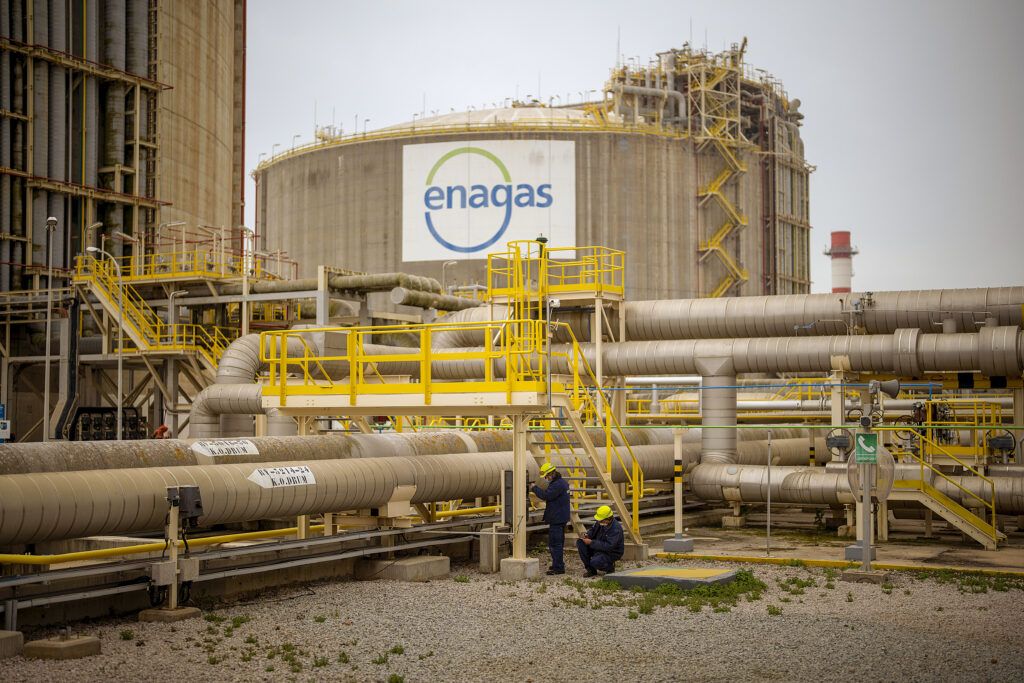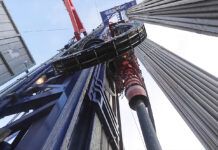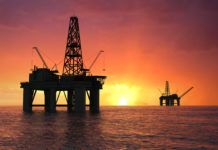Louisiana’s liquefied natural gas industry and the Haynesville Shale play are now inseparably linked as they move in tandem toward a future where natural gas, not oil, is the state’s big moneymaker.
Things look promising, from a purely economic standpoint at least. U.S. natural gas prices are much cheaper in the U.S. than Europe, and that has revitalized a lagging LNG export market. Haynesville rig counts are on the rise, too—mostly because of the burgeoning exports.
As of March 7, there were an impressive 48 rigs drilling in Haynesville Shale, according to the Louisiana Oil & Gas Association, the bulk of which are in DeSoto and Caddo parishes.
“Once natural gas gets above $3.5 mmtbu (it was $4.5 mmtbu at Henry Hub in early March), you’re well above the break-even point for Haynesville Shale,” says Loren Scott, an economist at Loren C. Scott & Associates in Baton Rouge.
And while the price likely will be driven downward somewhat due to seasonal factors, the outlook should remain good for the northwest Louisiana play.
“If you’re trying to get natural gas from the Permian, you have a lot further to go and there are pipeline capacity issues,” Scott adds. “We’ve got a good thing going here. I’m very optimistic. The rig count has more than doubled in the last year and the market is responding to that.”
Current prices and relatively low service costs make production economics the best in years. And firms are investing more as they estimate that higher prices will be more than adequate to cover the rising costs of labor and equipment.
Natural gas prices are in the “sweet spot” for both upstream producers and LNG owners, Scott says. “The price might be $3.5 MMBtu in the U.S. but it’s $100 in Europe,” he adds. “It won’t stay like that, but it won’t go away either. That’s really good news for LNG.”
That’s a far cry from 2020, when “everything seemed bad for the LNG market, especially in late summer and early fall when they were canceling contracts and ships. It’s now looking more like that was just an anomaly caused by COVID-19 and the resulting shutdown.”

CHANGING GOVERNMENT PERSPECTIVE
The mood in Washington, D.C., has also softened somewhat about LNG. Until February, the Biden administration seemed intent on delaying, not accelerating, the approval of new projects, says Eric Smith, director of the Tulane Energy Institute.
The Russian invasion of Ukraine, however, brought about calls for increased supply to Europe, and in March the U.S. Department of Energy authorized additional exports from Cheniere Energy Inc.’s Sabine Pass facility in Louisiana and Corpus Christi plant in Texas.
Additionally, FERC backed off some of its regulatory guidance for interstate pipelines to hasten the flow of natural gas to the facilities. In February, the commission had issued two significant policy statements governing how it would review proposals for new natural gas pipeline projects, including the consideration of greenhouse gas emissions in project reviews.
However, in late March FERC changed course and designated the policies as drafts that would not apply to pending project applications.
“Things have generally been positive since then,” Smith says. “We’re looking at faster utilization of our capacity, and that’s not a bad thing. FERC changing the rules regarding pipeline permitting means they are aligned with the idea that we can at least get the gas to the terminals so it can be liquefied and exported. That’s all positive for LNG.
“But the devil’s in the details,” he adds, noting the “bipolar” public policy of the last several years continues to make it difficult for LNG owners to secure long-term financing for new facilities.
Challenges by environmental groups are another fly in the ointment, says Bryant Bremer, a partner in Kean Miller’s Baton Rouge office who specializes in environmental regulation, compliance and incident and emergency response.
“For environmental or operational permits, there are a growing number of challenges by environmental groups, and that adds time and expense and resources as they’re challenged or reviewed,” Bremer says.
“Citizen suits” are an additional concern, whereby a grassroots group seeks to block or prevent the permitting of a facility or expansion.
“They’ll do that during the permitting phase or by contesting a governmental agency’s inaction, whether that be through enforcement or permitting,” Bremer adds. “Those can become very time consuming. It’s a long process and very expensive.”
The end result? An increased hesitancy on the part of financiers “who aren’t going to put the money up until they have an iron-clad guarantee from the government that they won’t have their pipeline truncated a few years from now,” Tulane’s Smith says.
“All it takes is one lawsuit to shut everything down. All you’ve got to do is have a judge issue a restraining order. They’re essentially behaving as political representatives of their particular region.”
Certain logistical hurdles have also become problematic for LNG. While the market dynamics are optimal —plentiful gas supply, profitable drilling and high demand for LNG in Europe and Asia—there are simply not enough import and export terminals in place to meet the demand.
“The Europeans are running the few LNG import terminals they have flat out, and they can’t take any more,” Smith says. “Unless you can move it to where someone needs it, it’s not much good to anyone.”
It’s a growing problem, says Scott. “Those European countries with the greatest demand lack the capacity to re-gasify all of the LNG that they need,” he says. “They would love to receive more LNG, but they can’t just accept it.”
The LNG industry is also particularly vulnerable to supply chain issues, as about 95% of LNG produced in the U.S. is exported, all of it leaving on foreign-flagged ships manufactured in Asia. The Panama Canal is another stumbling block, as it can only allow one ship at a time, per day.
“So if you wanted to pick a product that’s uniquely susceptible to shipping issues, it would be LNG,” Smith says.
And as U.S. projects are delayed due to these inherent logistical problems and political uncertainty, the number of foreign competitors continues to grow.
“The buyer, whether they be in the Asian or European countries, is going to go to the seller with the best deal, and that’s usually the one that has the best contract at the best price,” Smith says.
That makes it particularly difficult for an LNG owner to secure 20- or 30-year contracts, which banks require before financing a project.

Loren Scott, economist, Loren C. Scott & Associates in Baton Rouge
WILL MARKET DYNAMICS WIN?
Nevertheless, there’s growing confidence that the strong supply and demand for natural gas and LNG is here for the long term. That’s why Tellurian recently announced that construction of its $30 billion Driftwood LNG plant—located on the west bank of the Calcasieu River south of Lake Charles—would begin in April, even as funding arrangements for the project have not yet been finalized.
The Driftwood LNG production plant, which is being built by U.S. engineer Bechtel, is intended to produce 28 million tons of LNG a year.
Tellurian has also acquired some 1.5 trillion cubic feet of natural gas in the Haynesville play to supply the plant, as well as constructed a pipeline from the play. By doing so, Tellurian hopes to control costs and circumvent impending pipeline shortages.
Charif Souki, executive chairman of the Houston company, said in a press release that Tellurian had signed 10-year deals with Shell, Guvnor and Vitol for 9 million tons of gas, which justified beginning work on the first phase.
Tellurian is still attempting to arrange financing with other lenders but felt “comfortable” about beginning the project due to the high global demand for gas in Europe.
Phase one will comprise two plants, each with up to four liquefaction trains.
Elsewhere, Venture Global LNG announced that oil and gas major Shell Plc has agreed to buy LNG produced at its proposed Plaquemines LNG export plant. The contract is for 2 million tons per annum (MTPA) of LNG for 20 years, Venture Global said in a statement. Shell already buys 2 MTPA from Venture Global’s Calcasieu Pass plant.
Plaquemines, which has not been formally approved, would produce up to 20 MTPA beginning 2024.
And Cheniere Energy LNG recently finished construction of a sixth liquefaction unit at its Sabine Pass LNG export plant, paving the way for higher commercial exports. Contractor Bechtel Group recently finished building the sixth LNG processing train ahead of schedule and within budget, the companies said. The work began in June 2019.








